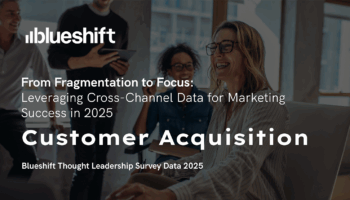We all know data is the key to better customer engagement; the question is how to best cultivate it?
Knowledge is power. That’s why businesses today revolve around data. For marketers who have been challenged with delivering increasingly real-time, customized, elaborate customer experiences, data and having a deep customer understanding is essential. Data is now the heart of the whole marketing system.
But data can only deepen customer insight and enable more precise marketing when it’s harnessed effectively. However, the ever-increasing speed, volume, and variety in which data is generated creates a real challenge: data perpetually changes, which means insights have a brief shelf-life.
How do marketers make sense of all their data and use it drive growth?



